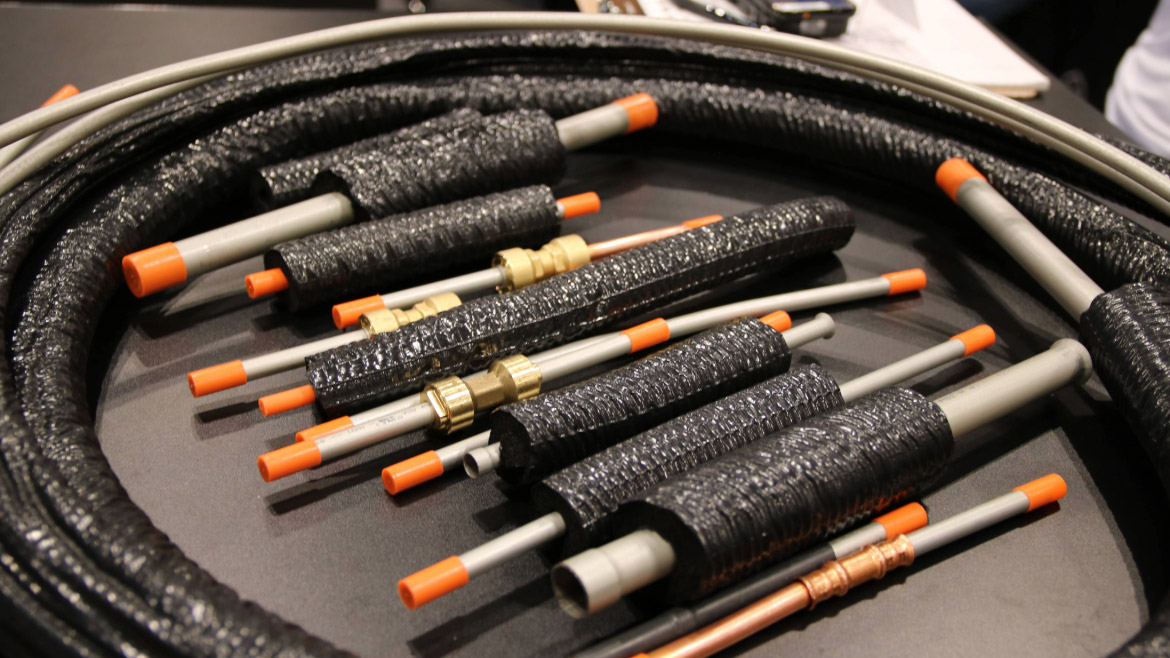For the second time in three years, copper prices are surging past the once-unthinkable $5 per pound mark. Futures on New York’s Comex recently surpassed $5.35 per pound — but this time, it’s not pandemic supply chain chaos driving the spike. Instead, the surge comes from panicked buying as President Trump considers implementing copper tariffs within weeks, rather than waiting for the standard 270-day study period to conclude. The tariffs could reach up to 25%.
“More bad tariff news,” said Stan Kolbe, Executive Director of Government and Political Affairs at the Sheet Metal and Air Conditioning Contractors’ National Association (SMACNA). “Many Members of Congress and most trade economists are by now convinced this is about raising revenues for the budget reconciliation package, not about reforming existing or flawed trade deals. Nor is it a negotiating strategy, as we long discussed and predicted.”
At the current rate, U.S. metal purchasers will pay near the highest prices in the world market for copper, and will attempt to pass that along to the marketplace where possible.
The data supports Kolbe’s assessment: the United States exported $11.3 billion of copper while importing $9.6 billion worth of copper last year, according to the Census Burea
“We export more copper than we import and new production facilities are countless years away … so tariffs are the answer, now?” Kolbe asked.
What started as a formal study now appears to be accelerating rapidly toward implementation. The timing is particularly concerning for the HVAC and the electrical contracting industry, Kolbe noted, affecting “a huge component of the HVAC equipment and related refrigeration equipment … Adding copper to the growing list of highly tariffed items is just a price spike most hoped to see delayed or dropped altogether.”
Supply Chain Disruption Already Underway
The mere speculation of tariffs has triggered unprecedented market reactions. Approximately 500,000 tons of copper are currently headed to U.S. ports — more than seven times the typical monthly import volume of 70,000 tons. This surge has pushed copper prices above $9,925 per ton on the London Metal Exchange, creating immediate challenges for the HVAC sector.
The White House’s rationale extends beyond traditional trade concerns. White House trade advisers characterize the investigation as a strategic move to counter China’s expanding copper sector and address national security vulnerabilities. The administration emphasizes the importance of restoring domestic mining, smelting, and refining capabilities for military and technological applications.
The administration’s push for domestic copper production faces significant hurdles. It takes an average of nearly 29 years for a new mine to go from discovery to production in the United States, highlighting the long-term nature of any solution to supply concerns. The Federal Reserve’s index of copper mining down more than 30% from its 1998 peak.
A case in point is Hudbay Minerals’ Copper World project in Arizona. The deposits were discovered in 2021 next to an adjacent site that had been in development since 2005, and after securing all three key state permits, the project is now positioned to become the third-largest copper cathode producer in the US. The company expects to complete its definitive feasibility study by the first half of 2026, with a construction decision to follow. However, this new supply is still years away from reaching the market, offering little immediate relief for the HVAC industry’s current challenges.
Industry Response and Adaptation
The HVAC sector, which relies heavily on copper for essential components like tubing and wire, must now navigate this uncertain landscape while maintaining service quality and managing costs.
Copper is essential for its unique malleability and durability in HVAC applications, particularly in line sets and evaporator coils, though it’s not without its challenges. While alternatives like aluminum and nickel-coated steel products exist, copper’s workability has traditionally made it the industry standard. However, newer alternatives are rapidly emerging — a substitution effect brought on in part because of copper’s 75% rise in cost over 5 years.
Duro Dyne’s Duro-Line, a USA-made alternative, offers flexibility and corrosion resistance while supporting operating temperatures from -55°F to 500°F — with approximately 40% higher operating pressure than copper. Nickel-diffused steel line sets are gaining attention, offering comparable malleability with enhanced durability (backed by 20-year warranties compared to copper’s typical 10-year coverage) and compatibility with existing copper fittings and tools.
Major manufacturers are taking notice — companies like Trane already use these alternatives internally, and Lennox is preparing to implement them in external units. Bosch uses aluminum instead of copper as well for many of its heat pumps and air handlers to prevent corrosion.
DURABLE: Duro Line for Duro Dyne offers a stable, high-performance alternative to traditional copper and aluminum HVAC line sets. (Staff photo)
Industry leaders are closely monitoring developments as the April 2 tariff announcement approaches.
According to recent industry analyses, HVAC equipment prices have already increased by approximately 40% since 2020, with average system costs nearly doubling. The potential addition of copper tariffs could further accelerate this trend.
As the demand for copper and aluminum continues to grow, some manufacturers are exploring alternative materials and technologies. However, copper remains essential for many HVAC applications, making the industry particularly vulnerable to any trade policy changes.
The coming weeks will be crucial as the industry awaits the administration’s decision and prepares for potential supply chain adjustments. With global copper demand projected to increase by 70% by 2050, driven by clean energy initiatives and technological advancement, the stakes for the HVAC industry have never been higher.
Whether you require installation, repair, or maintenance, our technicians will assist you with top-quality service at any time of the day or night. Take comfort in knowing your indoor air quality is the best it can be with MOE heating & cooling services Ontario's solution for heating, air conditioning, and ventilation that’s cooler than the rest.
Contact us to schedule a visit. Our qualified team of technicians, are always ready to help you and guide you for heating and cooling issues. Weather you want to replace an old furnace or install a brand new air conditioner, we are here to help you. Our main office is at Kitchener but we can service most of Ontario's cities
Source link



